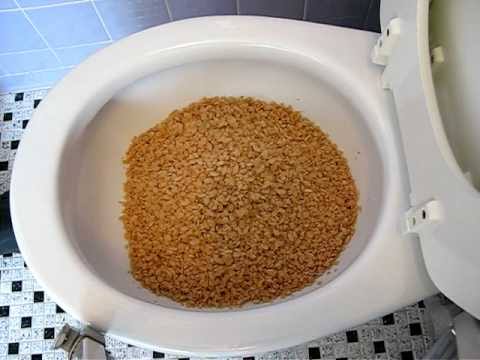Is it Safe to Flush Food in the Toilet?
Is it Safe to Flush Food in the Toilet?
Blog Article
We've unearthed this great article about Is it safe to flush food (especially rice) down the toilet? down the page on the web and accepted it made perfect sense to discuss it with you on this site.

Introduction
Lots of people are frequently faced with the problem of what to do with food waste, specifically when it comes to leftovers or scraps. One usual concern that occurs is whether it's alright to purge food down the bathroom. In this post, we'll delve into the reasons why individuals could think about flushing food, the consequences of doing so, and alternate techniques for appropriate disposal.
Reasons why people may take into consideration purging food
Lack of awareness
Some individuals may not be aware of the prospective damage brought on by purging food down the toilet. They may wrongly believe that it's a harmless practice.
Comfort
Flushing food down the toilet might look like a quick and very easy remedy to disposing of undesirable scraps, specifically when there's no close-by trash can available.
Idleness
Sometimes, people might simply pick to flush food out of sheer idleness, without thinking about the consequences of their activities.
Effects of flushing food down the bathroom
Ecological impact
Food waste that ends up in waterways can contribute to pollution and damage aquatic ecosystems. Furthermore, the water utilized to purge food can stress water sources.
Plumbing problems
Flushing food can cause blocked pipes and drains pipes, creating pricey pipes fixings and inconveniences.
Kinds of food that ought to not be purged
Fibrous foods
Foods with fibrous appearances such as celery or corn husks can get entangled in pipelines and cause obstructions.
Starchy foods
Starchy foods like pasta and rice can take in water and swell, causing blockages in pipes.
Oils and fats
Greasy foods like bacon or cooking oils should never be purged down the toilet as they can strengthen and cause obstructions.
Correct disposal approaches for food waste
Utilizing a waste disposal unit
For homes geared up with garbage disposals, food scraps can be ground up and flushed via the pipes system. However, not all foods appropriate for disposal in this fashion.
Recycling
Certain food product packaging materials can be recycled, decreasing waste and decreasing environmental effect.
Composting
Composting is an environmentally friendly way to deal with food waste. Organic materials can be composted and used to enhance dirt for gardening.
The relevance of proper waste management
Minimizing environmental injury
Appropriate waste monitoring methods, such as composting and recycling, aid minimize air pollution and protect natural deposits for future generations.
Securing pipes systems
By avoiding the method of flushing food down the commode, house owners can prevent costly plumbing fixings and keep the honesty of their pipes systems.
Verdict
Finally, while it might be alluring to flush food down the toilet for benefit, it is necessary to understand the potential effects of this action. By adopting correct waste administration practices and disposing of food waste sensibly, individuals can contribute to much healthier plumbing systems and a cleaner atmosphere for all.
FLUSH FOOD DOWN THE TOILET?
FLUSHING FOOD CAN CAUSE BLOCKED DRAINS IN YOUR HOME
All of the plumbing fixtures in your home are connected to the same sewer pipe outside of your home. This outdoor sewer pipe is responsible for transporting all the wastewater from your home to the Council sewer mains. Even small pieces of food that go down the kitchen sink can cause problems for your sewer. It should therefore be obvious that flushing larger bits of food, such as meat, risks a clog in either the toilet itself or the sewer pipes. Flushing greasy food is even more problematic because oil coagulates when it cools, coating the interior lining of your pipes.
THE TOILET IS NOT A BIN
Food isn’t the only thing that people shouldn’t be flushing down the toilet. People use the toilet to dispose of all kinds of things such as tampons, makeup wipes, dental floss, kitty litter and even underwear. Water goes to great lengths to educate residents about the high costs and stress placed on wastewater treatment systems simply from people flushing the wrong stuff down the toilet. It costs taxpayers millions of dollars each year, and homeowners thousands in blocked drain repairs.
FLUSHING FOOD IS A WASTE OF WATER
Flushing food is a waste of our most precious resource - water. In June this year Level 1 water restrictions were introduced to protect water supply from drought conditions. Much of New South Wales continues to be affected by prolonged drought with recent figures revealing up to 97 per cent of the state remains in drought. Depending on whether you have a single or dual flush toilet, every single flush uses between five and 11 litres of water. In the current climate this is a huge amount of water to be wasting on flushing food that should be placed in the bin (or better yet, the compost).
https://www.jabplumbingsolutions.com.au/blog/can-you-flush-food-down-the-toilet

I hope you enjoyed our part on Think Twice Before Flushing Food Down Your Toilet. Thanks a lot for taking a few minutes to read our piece of content. Sharing is good. Who knows, you could be helping someone out. We truly appreciate your readership.
Quote Report this page